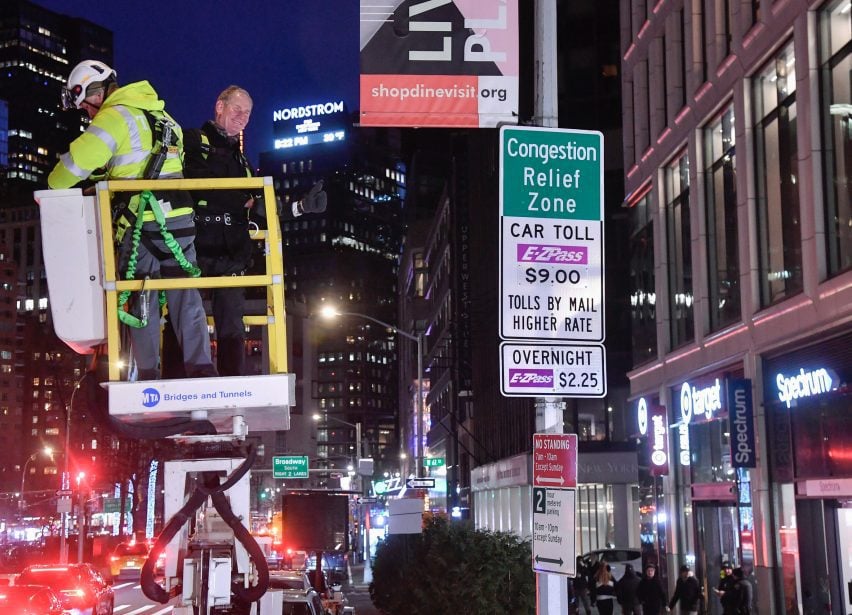New York City has become the first city in the US to charge a toll for vehicles entering the city during peak traffic areas in an attempt to reduce congestion, pollution and to provide funds for the city’s public transportation.
Congestion pricing was officially implemented in the city in early January, following a sudden and controversial indefinite pause by New York Governor Kathy Hochul in summer 2023.
Enforced by the Metropolitan Transportation Authority (MTA), the policy affects vehicles entering the “Congestion Relief Zone”, an area of Manhattan that covers Manhattan below 60th Street, which includes all of Midtown and Downtown.
According to the MTA, the charges depend on a number of factors such as the type of vehicle and the time of day. The tolls range from $9 (£7.20) for passenger cars to $21.60 (£17.27) for large trucks.

The “peak period” of highest rates is in effect from 5 am to 9 pm on weekdays and 9 am to 9 pm on weekends, with tolls dropping significantly in “overnight” after hours.
Pricing will also reflect inflation, with the $9 (£7.20) charge expected to reach $12 (£9.59) by 2028.
The MTA cites wasted time sitting in traffic, clogged streets, delayed travel time, as well as air pollution and its health impacts as reasons for the policy, although at least since Hochul’s 2023 pause, it has become highly politicised.
Opponents of the policy include US president-elect Donald Trump and the United Federation of Teachers (UFT) labour union, which has issued an outstanding lawsuit.
“Today’s announcement changes nothing – pollution and traffic congestion will be worse in the poor, working- and middle-class neighbourhoods of the city, and these same families are still being asked to shoulder the cost,” said UFT president Michael Mulgrew on the announcement of the revival of the plan in November.
“No one disputes that New York needs to invest in public transit. But doing it on the backs of the working people of New York City is wrong, and tone deaf.”
Some, such as the New York chapter of the AIA, have spoken out in support.
In their statement, the AIA referenced the success of similar tolls in cities such as London, which implemented a policy in 2003, and Singapore’s 1998 Electronic Road Pricing system.
According to Transport for London, after 20 years the toll has “already delivered huge progress in tackling toxic air” but critics generally argue the charges impact lower-income individuals the most.
Writer Phineas Harper previously discussed how politicians should “actively dismantle old car infrastructure” to reduce congestion in London, while the 2020 Coronavirus saw cities across Europe and America exploring more pedestrian and cyclist-friendly urban planning.
The photography is courtesy of the MTA via Flickr

